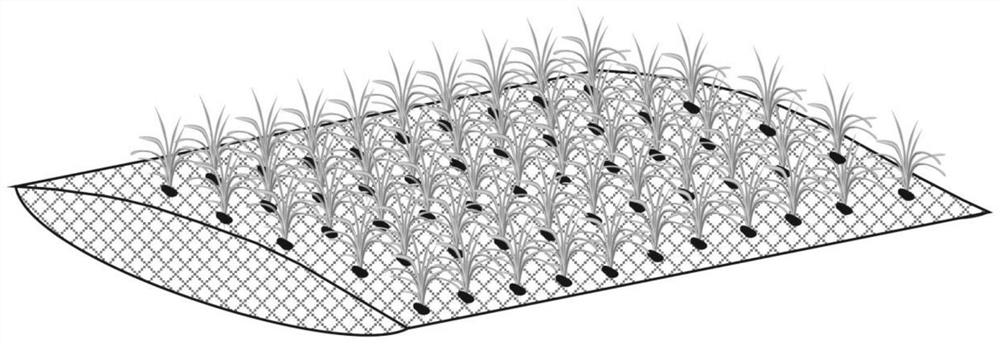Method for recovering submerged plants with hard substrates
A technology of submerged plants and recovery methods, applied in the field of water body ecological restoration, can solve the problems of non-natural environmental protection and degradability, and achieve the effects of high planting and survival efficiency, improved environmental protection, and rapid planting
- Summary
- Abstract
- Description
- Claims
- Application Information
AI Technical Summary
Problems solved by technology
Method used
Image
Examples
Embodiment 1
[0029] Puppet Lake is a typical hard-bottom lake. The southern part of the lake used to be a brick kiln. The bottom is hard and not suitable for the growth of submerged vegetation. This patented technology was used in the process of restoring the lake's submerged vegetation.
[0030] A recovery method for submerged plants with hard bottom, the steps are:
[0031] 1. On the basis of the survey of water depth distribution, select the water body within about 2m to determine the submerged plant restoration area, and set up permeable fish-proof enclosures in the target area to ensure that the aquatic plant restoration area will not be affected by fish feeding;
[0032] 2. The ratio of the light intensity below the water depth of 1.25m to the light intensity of the surface of the water body is less than 20%, and the water depth of the planting area is 2m. One of them or any combination of two to four kinds of Chinese cabbage or foxtail algae) artificially cultivated to a height of ...
PUM
 Login to View More
Login to View More Abstract
Description
Claims
Application Information
 Login to View More
Login to View More - R&D
- Intellectual Property
- Life Sciences
- Materials
- Tech Scout
- Unparalleled Data Quality
- Higher Quality Content
- 60% Fewer Hallucinations
Browse by: Latest US Patents, China's latest patents, Technical Efficacy Thesaurus, Application Domain, Technology Topic, Popular Technical Reports.
© 2025 PatSnap. All rights reserved.Legal|Privacy policy|Modern Slavery Act Transparency Statement|Sitemap|About US| Contact US: help@patsnap.com

